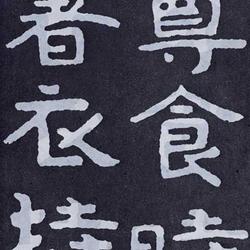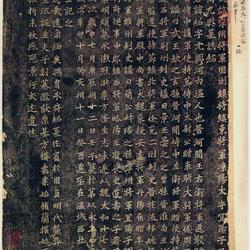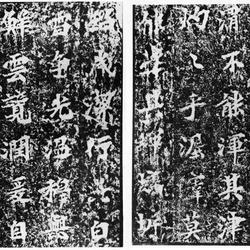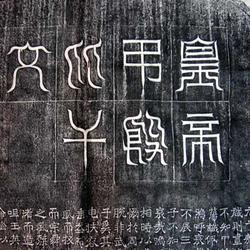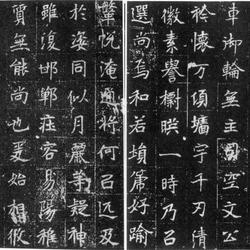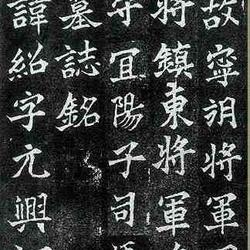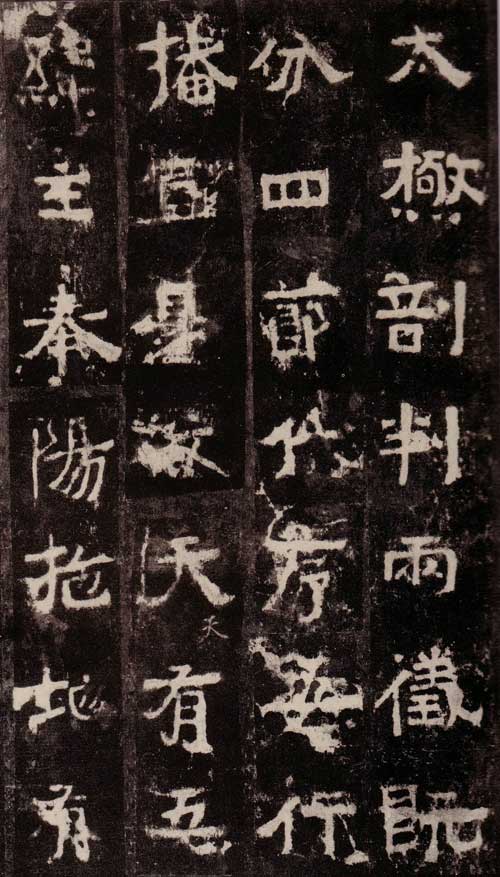
"Zhongyue Songgaoling Temple Stele" (Ming rubbings), written by Kou Qian, inscribed in the Northern Wei Dynasty, heavy ink rubbings, cut and mounted in a volume, 38 pages in total, each page is 27.5cm long and 15.5cm wide. Collection of the Palace Museum, Beijing.
The cover is signed by Guo Moruo, followed by inscriptions and postscripts by Pan Chengbi, Shao Rui and others, as well as various seals such as "Yu Jixiang Seal" and "Song Fu". It was once collected by Chen Shutong.
This stele was erected in the second year of Tai'an (456) in the Northern Wei Dynasty. The main script has 23 lines on the top of the stele, 50 characters in each row, and 7 columns on the bottom of the stele. The characters in the upper 2 columns are larger, totaling 22 lines, and the characters in the lower 5 columns and 16 lines are smaller. , the number of rows in each column is different. There are 4 lines of Yangwen in seal script on the forehead with a total of 8 characters, and the side is engraved with a brief account of Ma Yuanzhen's surrender to the dragon in 1692, the third year of Tianshou of the Tang Dynasty. The content of the inscription is that Kou Qianzhi repaired Zhongyue Temple and promoted Taoism. The monument is now in Zhongyue Temple, Songshan Mountain, Dengfeng County, Henan Province.
This stele belongs to the category of strong style in Wei stele calligraphy. Although his calligraphy is in regular script, the structure and writing style are still between official script and regular script. It is a transitional style from official script to regular script. Kang Youwei commented on the calligraphy of this stele as "both style and official regular script, and the brush strokes are square and round." He also called the calligraphy on the yang of the stele "strange and ancient" and the calligraphy on the yin of the stele "high and straight", giving them a very high evaluation.
The first line of this copy, "Tai Chi Anatomy," is intact, and lines 11 to 18 have 5 to 11 more characters than the rubbings from the early Qing Dynasty, making it the oldest rubbing in existence.
It was recorded in the Qing Dynasty Wu Yu's "Inscriptions and Stones", Zhu Shiduan's "Yilutang Epigraphy Records", Lu Zengxiang's "Baqiongshi Jinshi Supplement" and other books.
The above information comes from the website of the Palace Museum
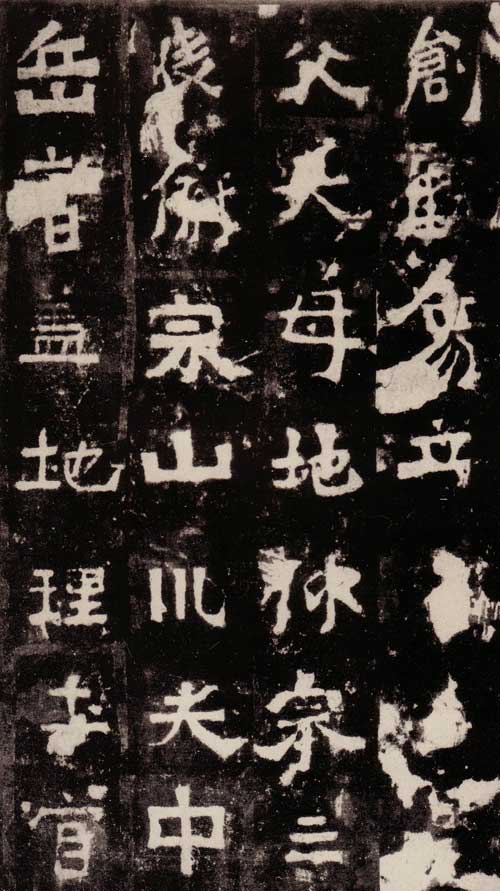
Related references: =============================================
The oldest existing rubbing was collected by Chen Shutong and is now in the Palace Museum. The eighth line sounds "Gu Yan Si", and the last stroke of "Gu" is slightly connected to the stone flower. The first line of the seventeenth line has the characters "Xia", "Zuo Qi", "Taoist Yang Longzi renovated the new temple Taiyan" and other characters intact. The sixteenth and eighteenth lines lack the number ten. Under the first word of the eighteenth line, under the word "Yun", "Yun Ji, true, chaotic and poor, then Ye Yi" and other words are intact (the word "Tuo Shi" is completely missing in the near future). In addition, most of the entire copy from the old collection of Chen Shuyong in the Kuai Ruomu Collection of the Nanjing Museum was made a little later, and the final strokes of "Geng" were made with stone flowers, which is far inferior to the old copy in the Chen collection. The above two copies of Shao Mingsheng's "Cultural Relics" No. 11 in 1962 and No. 6 in 1965 were thoroughly researched.
The printed version is a fragment from the old collection of Duanfang, the first line of the cut-out characters is not damaged, the second is a stone-printed version, the cut-out version has more Yang Longzi's remaining characters than the Duanfang version, and the Luo Zhenyu seal version, the eight lines of ancient characters are damaged when sitting down, and the two characters of Daolong are damaged. Save half. Fang's "Essays on the School Stele" only shows the complete version of the cross-section characters.
Kang Youwei admired this stele very much and classified the Yin of the stele as a "divine product". He said that "Cuan Long Yan" and "Yin of the Ling Temple Stele" are of the same body. "The gold and jade are all imitated by Yuan Chang and truly inherit the orthodoxy of Zhonglang." He also said: "Nothing is more ancient than Kou Qianzhi."
Like many works of art, if it is too neat and polished, it will lose its naturalness and natural interest. The charm of this stele is that it is in the process of development and many places are not yet "mature", so it has a simple natural charm that many later "mature" stele inscriptions do not have. The text of this stele is roughly the same as that of the "Dadai Huayue Temple Stele".
It is said that it was established during the Taiyan period (435~440).
It is passed down as the book of Kou Qian. Kou was a native of Changping, a famous Taoist, active in Song and Hua.
Although "Zhongyue Songgaoling Temple Stele" is indulgent, its style is extremely high and powerful, the writing power is calm, and it has a solemn and interesting taste. The text of this stele is roughly the same as that of the "Dadai Huayue Temple Stele". Only the words and sentences related to Songhua in the middle are interchanged.

